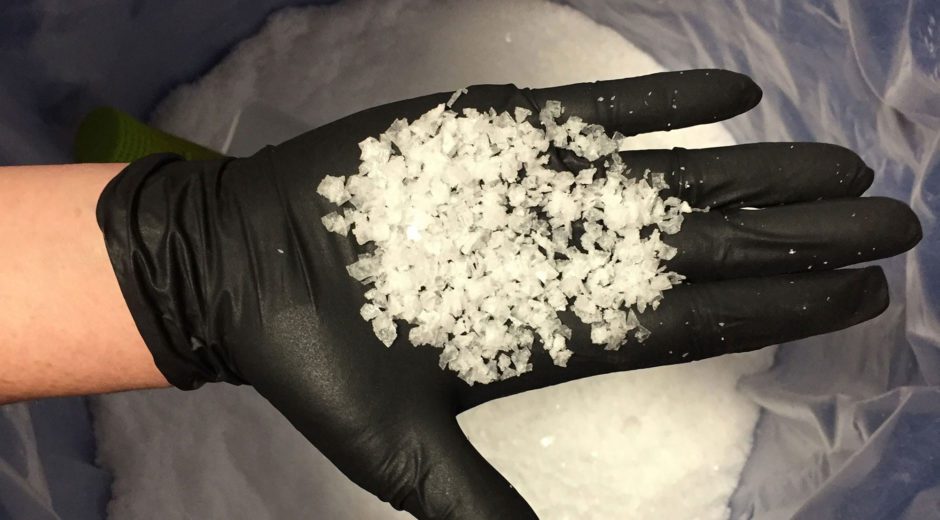With so much ocean water, you’d think everyone would make their own salt on the Oregon Coast. Salt processing, in fact, was one of the main reasons the team led by explorers Lewis and Clark made their way from Fort Clatsop at what’s now Lewis and Clark National Historical Park to the coastal beaches.
After locating the perfect site near current day Seaside in the winter of 1805-6, the men boiled seawater to make enough flaky salt to cure and preserve meat for their camp. It took 24 hours a day for several weeks to amass 28 gallons of the stuff.
You can see a recreation of their operation at the Lewis and Clark Salt Works, a little pocket park on the south side of Seaside. This is understood to be the location where the men set up their kettles to boil seawater on a furnace stoked by burning wood. It’s also near the beach where trained history volunteers conduct annual demonstrations of making salt, The Salt Makers Return, where they show visitors how it was done.
But those historical demos are not the only salt manufacturing on the North Coast these days. Jacobsen & Co. — possibly the first salt works on the coast since Lewis & Clark — manufactures sea salt from the clean, cold saline waters of Netarts Bay. The hand-harvested salt flakes are known to chefs and home cooks for their quality, and have gained national attention. This location was chosen for its high salinity and low turbidity, helped by clean source waters and oysters that filter the water in the bay.
You can purchase Jacobsen salts and other culinary goodies from their gift shop in Netarts if you’re traveling in this lovely area between Oceanside and Cape Lookout. They also have a shop at their Portland headquarters. Look for kosher and flake finishing sea salt, flavored salts, and hyper-local Oregon honey that comes from some very unusual and cool places.
Jacobsen doesn’t offer tours of its salt works in Netarts to the public, but you may catch a glimpse of the processing set-up as you drive to the shop, located on the same property. The salt is pumped from the bay, boiled and filtered to reduce impurities and create a thick brine, then spread out in drying tubs where the dry crystals form and can be collected for grading. Check out a behind-the-scenes video on the process.

